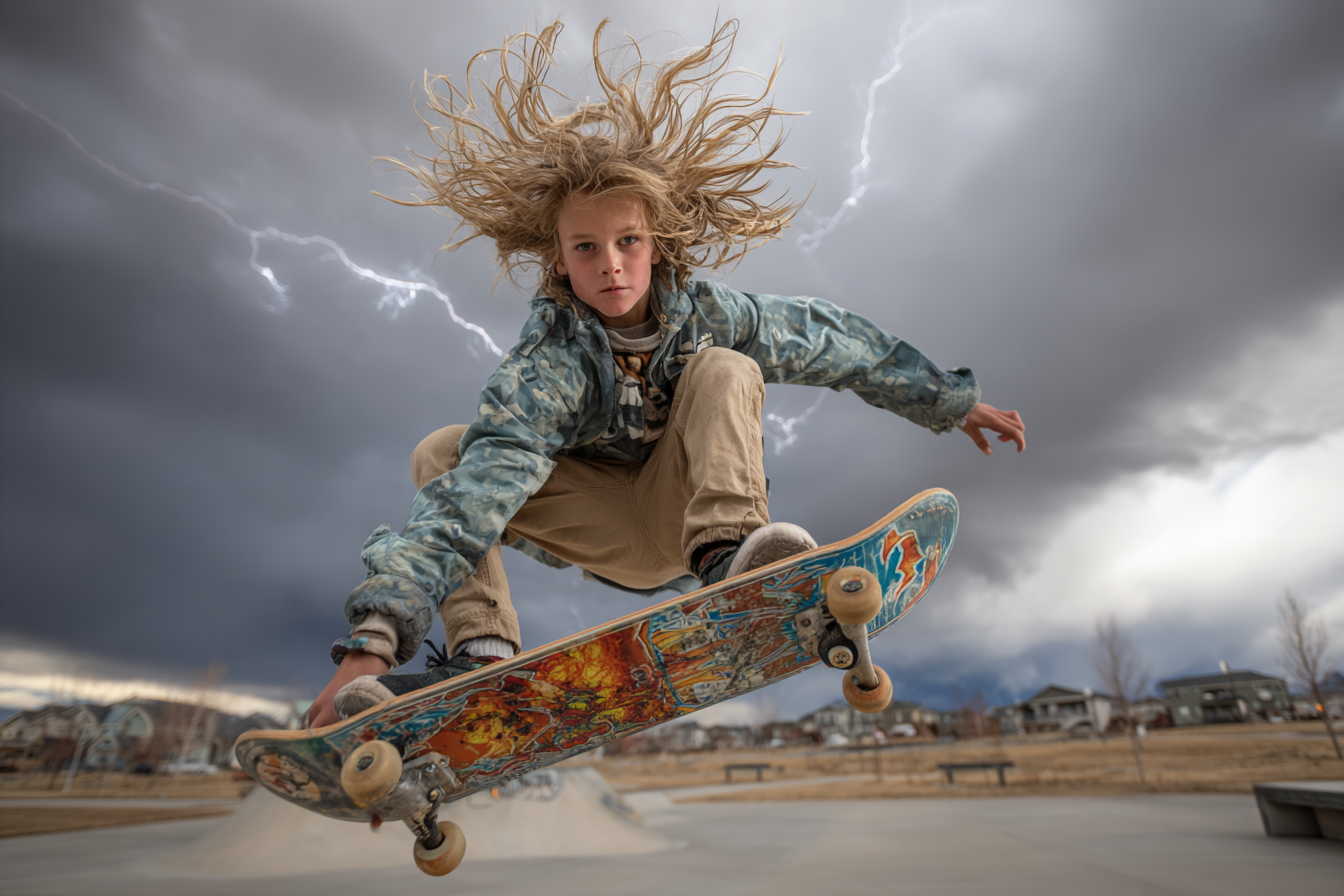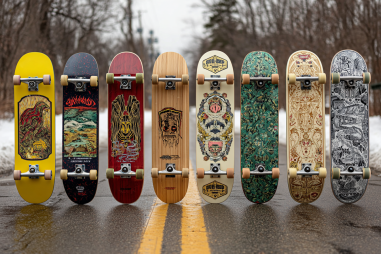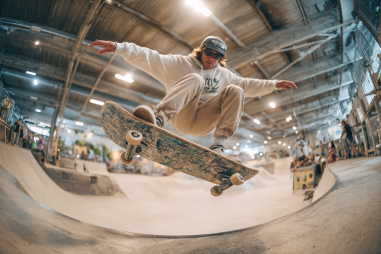Skateboarding is a thrilling sport that challenges your balance, coordination, and creativity. However, when the wind picks up, it can significantly alter your skating experience — making it tougher to maintain control during tricks. Whether you’re trying to land an ollie, a kickflip, or more advanced maneuvers, gusty conditions add an extra layer of complexity. The good news? With the right strategies and practice, you can adapt to windy conditions and even use the wind to your advantage. Let’s dive into how wind affects skateboarding and explore tips and techniques to keep progressing no matter how blustery it gets.
The Impact of Wind on Skateboarding
Wind might seem like a minor factor when you head out to skate, but it can have a surprising impact. It directly influences your balance and stability, pushes against your body and board, and can throw off your timing. For instance, a sudden gust could change your trajectory mid-air or make you lose footing on the approach to a trick. Because skateboarding relies heavily on precise body control and momentum, even slightly unpredictable wind can make seemingly simple moves much more difficult.
Not all wind situations are equal — steady breezes are often manageable, but strong gusts or crosswinds can disrupt your skating flow. Recognizing how the wind interacts with your body and board is the first step to mastering control.
Understanding How Wind Affects Balance and Trick Execution
When you skate, you’re constantly working to keep your center of gravity aligned over the board. Wind can push your upper body or legs off-center, especially when you’re mid-trick and airborne. For example, during an ollie, if a crosswind hits your body, it might tilt your board or shift your landing position. The result? You could lose balance or miss the landing.
Wind resistance also affects your speed. Headwinds slow you down, which can reduce the momentum needed to complete tricks, while tailwinds might push you faster than expected, causing timing issues. The erratic nature of gusts can make it tough to predict exactly how they’ll affect your movement, which in turn challenges your muscle memory and anticipation.
In general, wind increases instability, requiring you to tighten your stance and engage your core muscles more actively to maintain control.
Choosing Optimal Locations to Minimize Wind Interference
One of the smartest ways to deal with windy conditions is selecting the right spot to skate. A sheltered area can significantly reduce wind impact and make practicing safer and more comfortable. Here are a few tips for choosing locations:
- Seek windbreaks: Skate parks surrounded by walls, fences, or buildings can shield you from gusts.
- Consider natural terrain: Trees and hills can block or slow down wind, creating calmer pockets.
- Avoid open plazas: Large open areas expose you fully to wind, making tricks harder.
- Check weather patterns: Skating in the morning or evening often means lighter winds compared to mid-afternoon.
By adjusting where you practice on windy days, you can reduce disruptions and focus more on your technique.
Techniques to Maintain Control During Windy Tricks
Maintaining control when the wind is working against you requires some technical tweaks. Here are several techniques to help keep your balance and manage your board better:
- Lower your center of gravity: Bend your knees more to stay grounded and make micro-adjustments easier.
- Engage your core: A tight core helps resist lateral forces and keeps your upper body steady against the wind.
- Adjust your stance width: Widening your feet slightly can improve balance, but don’t go too wide to maintain agility.
- Use your arms: Actively extend or retract your arms mid-air to counteract wind pushes.
- Focus on controlled landings: Be ready to absorb impact gently rather than stiffening, which helps maintain balance if the board shifts.
Practicing these subtle body control methods helps you gain confidence in less-than-ideal conditions.
Adjusting Timing and Approach for Gusty Environments
Because wind can suddenly change, timing becomes even more critical. When you’re about to perform a trick, you may need to:
- Wait for lulls: If possible, pause to launch your trick during calmer moments rather than when gusts hit.
- Modify your speed: Slow down slightly against headwinds for better stability or adjust your momentum based on wind direction.
- Alter approach angles: Taking an adjusted path can help reduce the direct impact of side winds on your movement.
- Break tricks into smaller steps: Work on components of a trick more methodically to build control and timing awareness.
These mindfulness-based approaches will help you stay in tune with changing environmental factors and improve your performance.
Safety Considerations When Skating in Wind
Skateboarding in wind isn’t just challenging — it can also be risky. Here’s how to skate safely:
- Wear protective gear: Helmets, knee pads, and wrist guards can prevent injury if you lose balance or are pushed off course.
- Check your surroundings: Be aware of debris or loose objects that might blow onto your path and cause falls.
- Avoid skating near traffic: Wind can make sudden movements unpredictable, and dodging cars adds unnecessary danger.
- Know when to call it: Don’t push your limits in extremely windy or stormy conditions where control is almost impossible.
Prioritizing safety ensures you can enjoy skateboarding for the long term, even if that means skipping a session on particularly blustery days.
Drills to Practice Wind-Adaptive Skills
Improving your ability to skate in wind takes focused practice. These drills specifically target balance and control under variable conditions:
- Balance walks: Walk slowly on your board while maintaining a low stance to build stability on uneven footing.
- One-foot glides: Practice gliding with one foot on and one foot off your board to enhance core and ankle control.
- Controlled ollies: Perform ollies at reduced height, focusing on body alignment and smooth landings despite wind.
- Arm positioning drills: Jump and experiment with arm positions to counterbalance sideways forces effectively.
- Small quarter pipe or bank runs: Use mild ramps to practice adapting your trajectory and timing with gusts.
Incorporating these exercises routinely will make your muscles and mind more resilient to the unpredictable nature of wind.
Embracing Wind as a Challenge and Advantage
While wind may initially feel like a frustrating hurdle, it can also become a powerful training tool. Learning to skate well in windy conditions forces you to sharpen your balance, hone your timing, and deepen your understanding of body mechanics. Over time, what once seemed like an obstacle will become an opportunity to refine your skills and boost your confidence.
Next time you face a windy day, instead of skipping your session, try applying these tips and embrace the challenge. You might discover a new level of adaptability and enjoyment in your skateboarding journey.







